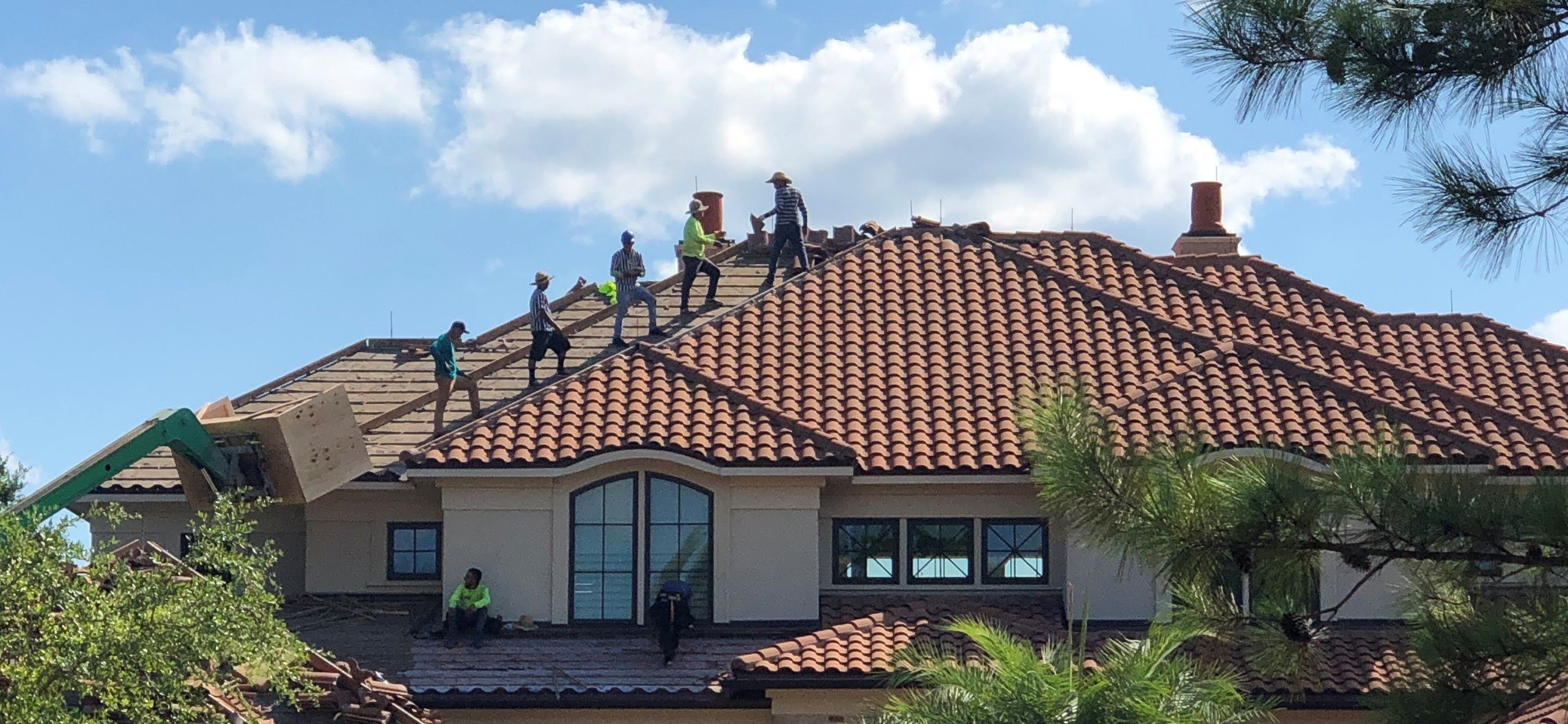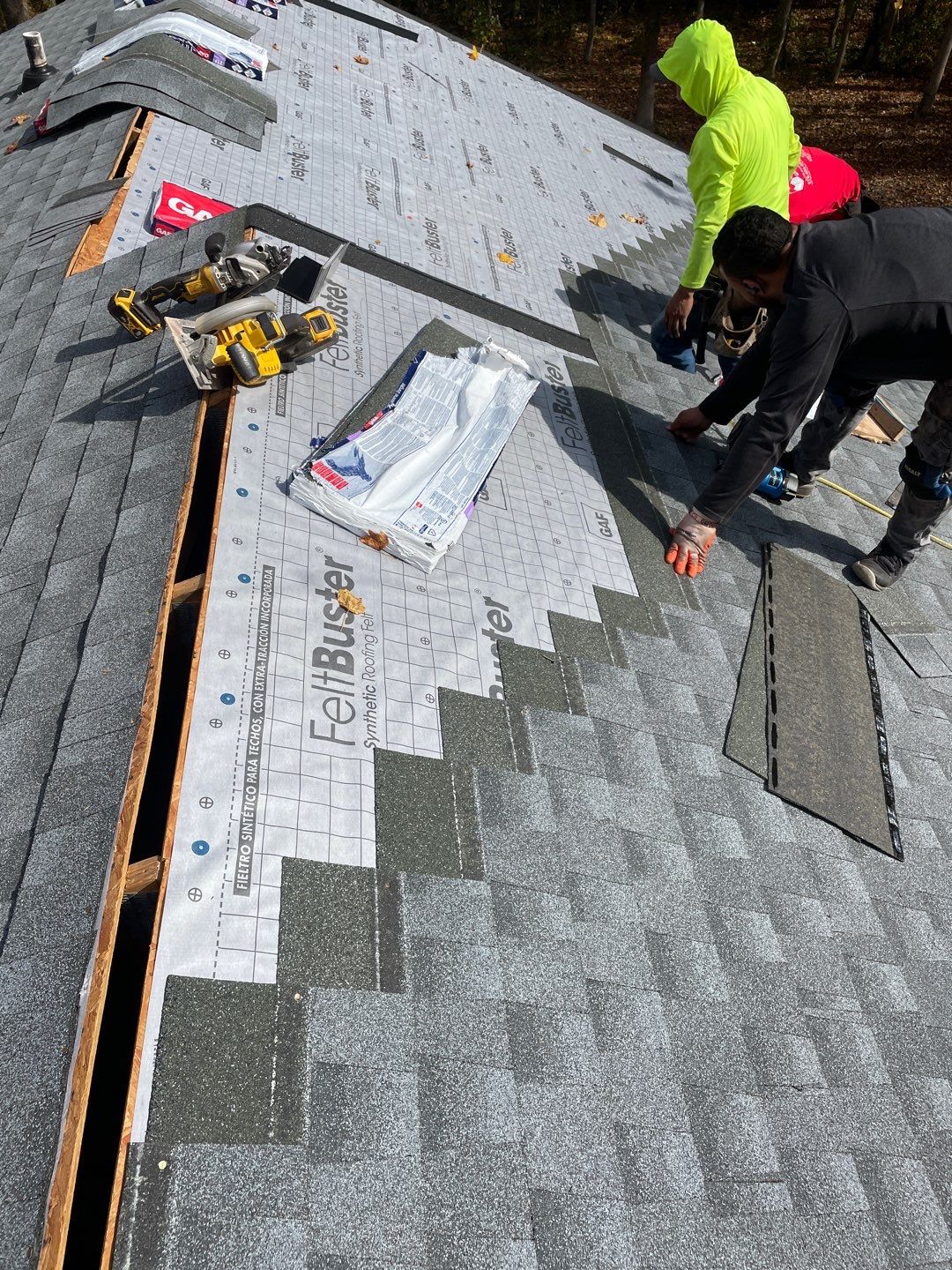The Benefits of Collaborating With Gainesville FL Roofing Companies
The Benefits of Collaborating With Gainesville FL Roofing Companies
Blog Article
Best Practices for Ensuring Correct Roofing Ventilation
Making certain correct roofing ventilation is crucial for the durability and performance of a roof. A balanced intake and exhaust air vent proportion, generally 1:300, plays an essential function, with consumption vents preferably put at the reduced edge of the roof for cool air entry and exhaust vents at the peak for cozy air exit. Regular examinations to recognize clogs and preserve clear air flow are extremely important. In addition, maintaining insulation far from vents is vital to stop air flow constraint. Understanding these fundamental elements establishes the stage for even more detailed understandings into installment and upkeep practices that can substantially improve your roof's efficiency.
Understand Air Flow Basics
Properly understanding air flow basics is crucial for making certain the long life and performance of roof. Reliable air flow reduces moisture accumulation and temperature extremes in the attic, both of which can cause considerable structural damage gradually. A well-ventilated roof helps in preventing usual concerns such as mold and mildew growth, timber rot, and ice dams, which can compromise the stability of the roofing products and the underlying structures.
The key objective of ventilation is to promote the movement of air, enabling a constant exchange between the outside and interior environments. This balance is accomplished with a combination of consumption and exhaust vents that collaborate to maintain ideal air movement. Intake vents, typically located along the soffits or eaves, enable fresh air to get in the attic area, while exhaust vents, often located at or near the roofing system ridge, enable warm, damp air to run away.
Trick variables affecting the performance of roofing system air flow include proper positioning, appropriate sizing, and guaranteeing that both intake and exhaust vents are unobstructed. Regular evaluation and maintenance are essential to determine prospective clogs, damages, or inefficiencies in the air flow system, therefore safeguarding the roofing system's performance and durability.
Kinds of Roofing Vents
Roofing system vents play an important function in preserving reliable attic room air flow and, by extension, the total health of the roof. Different kinds of roof covering vents are available, each with unique benefits tailored to details roofing demands. Ridge vents, as an example, are set up along the roofing system's height, permitting warm, humid air to escape from the attic room. They provide continual air flow and blend perfectly with the roofline, making them both effective and cosmetically pleasing.

Soffit vents are set up under the eaves and operate in tandem with roof vents to ensure a balanced consumption and exhaust system. By enabling cooler air to get in from below, soffit vents promote the expulsion of warm air through top vents. Gable vents, located on the outside walls of the attic room, offer one more efficient solution, particularly in homes with gable roof coverings.
Examine Your Current Ventilation

Following, take into consideration the age and problem of your roofing materials and ventilation elements. Older systems might not adhere to current building regulations or might have deteriorated gradually, minimizing their efficiency. Conduct a detailed exam to determine any type of signs of damage, such as corrosion, damage, over at this website or spaces that could compromise the system's performance.
Additionally, gauge the attic room temperature and humidity levels. High temperatures go to this website and moisture can show poor ventilation.
Setup Best Practices
Effective installation of roof covering air flow systems is extremely important for making certain optimal performance and long life. Appropriate installment starts with comprehending the specific air flow needs of the roof covering and the building it covers. This involves computing the right proportion of intake to wear down vents, generally adhering to the 1:300 regulation, which states one square foot of air flow for every single 300 square feet of attic flooring area.

Consumption vents need to be set up at the roof covering's lower side, commonly in the soffits, to permit awesome air to get in. Exhaust vents, on the various other hand, must be mounted near or at the roof covering's top to promote the exit of warm, damp air.
Seal all vent connections thoroughly to prevent air leaks and prospective water infiltration. Use high-grade products and comply with producer standards to make certain toughness and performance. In addition, incorporating ridge vents with baffles can considerably boost air flow effectiveness by protecting against wind-driven rainfall and snow from getting in the attic.
Ultimately, exact installation of roof ventilation systems mitigates possible concerns such as mold and mildew development, ice dams, and architectural damage, ensuring the roof covering's stability and the structure's overall health.
Routine Maintenance Tips
Uniformity in upkeep methods is fundamental to ensuring the long-term performance of roof covering air flow systems. Routine examinations are important, ideally executed biannually-- in the spring and fall. Throughout these inspections, ensure that vents are devoid of particles, nests, and other obstructions that could restrain airflow. Look for any kind of indicators of wetness build-up or mold, as these can indicate incorrect air flow or leaks (gainesville roofing companies).
Utilize a soft brush or a vacuum cleaner to get rid of dust and particles from consumption and exhaust vents. Be careful not to damage the vent screens or louvers throughout the procedure.
Proper insulation is equally essential. Make Going Here certain that attic insulation does not obstruct the vents, as this can drastically restrict air flow. If any type of insulation has moved or worked out, reposition or replace it to keep a reliable barrier.
Finally, change any kind of damaged or missing out on elements without delay. Damaged vents, broken tiles, or tatty flashing can all add to inadequate ventilation and should be attended to immediately. Routine upkeep guarantees that the roof air flow system functions optimally, consequently expanding the lifespan of the roof itself.
Conclusion
Making sure appropriate roofing ventilation is vital for keeping the performance and sturdiness of a roof covering system. Adherence to the 1:300 intake and exhaust air vent proportion, combined with the strategic placement of vents, is crucial. Regular biannual inspections, debris cleansing, and ensuring insulation does not obstruct air flow are crucial methods. Carrying out these finest practices will certainly cultivate a well-ventilated roof covering system, thereby mitigating potential issues associated to moisture buildup and too much warm, inevitably extending the roofing's life-span.
A well balanced consumption and exhaust air vent proportion, generally 1:300, plays an essential role, with consumption vents preferably put at the reduced edge of the roofing system for trendy air access and exhaust vents at the optimal for cozy air departure. Intake vents, normally located along the eaves or soffits, enable fresh air to enter the attic area, while exhaust vents, usually located at or near the roofing system ridge, make it possible for warm, damp air to escape.
Soffit vents are mounted under the eaves and work in tandem with roof covering vents to guarantee a balanced intake and exhaust system. By allowing cooler air to go into from below, soffit vents assist in the expulsion of hot air via upper vents. Adherence to the 1:300 consumption and exhaust air vent proportion, combined with the tactical placement of vents, is crucial.
Report this page